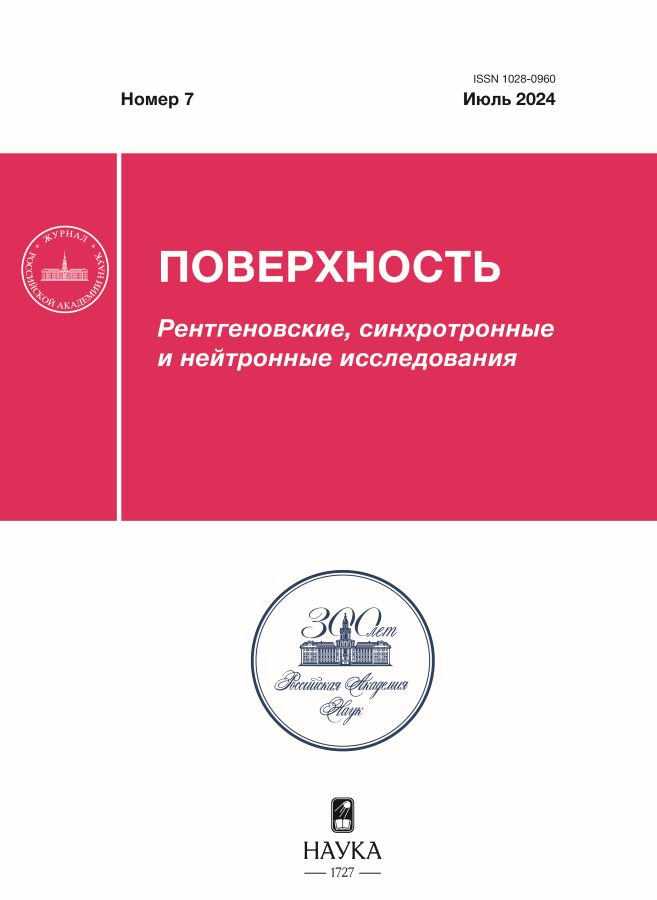Stability of the magnetic subsystem of 2D magnets from the method of the crystal orbital hamilton population
- Autores: Kushchuk L.I.1, Veretimus D.K.1, Lega P.V.1,2,3, Antonenkova A.Y.3, Kartsev A.I.4,2,3
-
Afiliações:
- Bauman Moscow State Technical University
- Kotelnikov Institute of Radio Engineering and Electronics RAS
- RUDN University
- Computing Center Far Eastern Branch RAS
- Edição: Nº 7 (2024)
- Páginas: 113-118
- Seção: Articles
- URL: https://medjrf.com/1028-0960/article/view/664801
- DOI: https://doi.org/10.31857/S1028096024070151
- EDN: https://elibrary.ru/EUHRKK
- ID: 664801
Citar
Texto integral
Resumo
The densities of electronic states in quasi-two-dimensional vanadium nitrides have been studied using density functional theory and the method of the crystal orbital Hamilton population. The contribution of various orbital pairs and their influence on the stability of the magnetic subsystem of these compounds has been analyzed using the crystal orbital Hamilton population (COHP) algorithm. The calculation results and their analysis suggest that the formation of long-range magnetic order plays a role in the structural stabilization of magnetic quasi-two-dimensional transition metal nitrides. Comparing –COHP curves for different vanadium nitrides shows that the nitrogen stoichiometry in VxNy compounds affects the electronic properties and the nature of the chemical bond during the transition to the ferromagnetic state. Calculation data and total energies prove the structure-stabilizing effect of long-range magnetic ordering in quasi-two-dimensional vanadium-nitrogen compounds.
Texto integral
Sobre autores
L. Kushchuk
Bauman Moscow State Technical University
Email: karec1@gmail.com
Rússia, Moscow
D. Veretimus
Bauman Moscow State Technical University
Email: karec1@gmail.com
Rússia, Moscow
P. Lega
Bauman Moscow State Technical University; Kotelnikov Institute of Radio Engineering and Electronics RAS; RUDN University
Email: karec1@gmail.com
Rússia, Moscow; Moscow; Moscow
A. Antonenkova
RUDN University
Email: karec1@gmail.com
Rússia, Moscow
A. Kartsev
Computing Center Far Eastern Branch RAS; Kotelnikov Institute of Radio Engineering and Electronics RAS; RUDN University
Autor responsável pela correspondência
Email: karec1@gmail.com
Rússia, Khabarovsk; Moscow; Moscow
Bibliografia
- Mahapatra P.L., Tromer R., Pandey P. et al. // Small. 2022. V. 18. № 27. P. 2201667. https://doi.org/10.1002/smll.202201667
- Ghosh S.K., Mandal D. // 2D Nanomaterials for Energy Applications: Graphene and Beyond. Elsevier, 2020. P. 1. https://doi.org/10.1016/C2018-0-00152-8
- Cortie D.L., Causer G.L., Rule K.C. et al. // AdV. Funct. Mater. 2020. V. 30. № 18. P. 1901414. https://doi.org/10.1002/adfm.201901414
- Coronado E. // Nat. Rev. Mater. 2020. V. 5. P. 87. https://doi.org/10.1038/s41578-019-0146-8
- Pramanik A., Kumbhakar P., Negedu S.D., Tiwary C.S. // Opt. Lett. 2022. V. 47. № 19.P. 4965. https://opg.optica.org/ol/abstract.cfm?URI=ol-47- 19-4965
- Moradi Z., Vaezzadeh M., Saeidi M. // Phys. Chem. C. 2023. V. 127. № 25. P. 12243. https://doi.org/10.1021/acs.jpcc.3c01954
- Park J.G. // J. Phys.: Condens. Matter. 2016. V. 28. № 30. P. 301001. https://doi.org/10.1088/0953-8984/28/30/301001
- Negedu S.D., Karstev A., Palit M., Pandey P., Emmanuel O.F., Roy A.K., Das G.P., Ajayan M.P. Kumbhakar P., Tiwary C.S.// J. Phys. Chem. C. 2022. V. 126. № 30. P. 12545. https://doi.org/10.1021/acs.jpcc.2c02102
- Mazaev P.V., Koledov V.V., Shavrov V.G. et al. // J. Commun. Technol. Electron. 2016. V. 61. P. 630. https://doi.org/10.1134/S1064226916060176
- Lega P., Kuchin D.S., Koledov V.V., Sampath V., Zhikharev A.M., Shavrov V.G. // Mater. Sci. Forum. 2016. V. 845. P. 142. http://dx.doi.org/10.4028/www.scientific.net/MSF.845.142
- Giannozzi P., Andreussi O., Brumme T. et al. // J. Phys.: Condens. Matter. 2017. V. 29. № 46. P. 465901. https://doi.org/10.1088/1361-648X/aa8f79
- Sihi A., Pandey S.K. // Eur. Phys. J. B. 2020. V. 93. P. 9. https://doi.org/10.1140/epjb/e2019-100500-8
- Şaşıoğlu E., Friedrich C., Blügel S. // Phys. Rev. B. 2011. V. 83. № 12. P. 121101(R). https://doi.org/10.1103/PhysRevB.83.121101
- Kartsev A., Feya O.D., Bondarenko N., Kvashnin A.G. // Phys. Chem. Chem. Phys. 2019. V. 21. № 9. P. 5262. https://doi.org/10.1039/C8CP07165A
- Kartsev A., Malkovsky S., Chibisov A. // Nanomaterials. 2021. V. 11. № 11. P. 2967. https://doi.org/10.3390/nano11112967
- Prandini G., Marrazzo A., Castelli I.E., Mounet N., Marzari N. // npj Comput. Mater. 2018. V. 4. № 1. P. 72. https://doi.org/10.1038/s41524-018-0127-2
- Grimme S., Antony J., Ehrlich S., Krieg H. // J. Chem. Phys. 2010. V. 132. № 15. P. 154104. https://doi.org/10.1063/1.3382344
- Maintz S., Deringer V.L., Tchougréeff A.L., Dronskowski R. // J. Comput. Chem. 2016. V. 37. № 11. P. 1030. https://doi.org/10.1002/jcc.24300
- Landrum G.A., Dronskowski R. // Ang. Chem. Int. Ed. 2000. V. 39. № 9. P. 1560. https://doi.org/10.1002/(SICI)1521-3773 (20000502)39:9%3C1560::AID-ANIE1560%3E3.0. CO;2-T
- Сорокин А.А., Макогонов С.В., Королев С.П. // Научно-техническая информация. Сер. 1. Организация и методика информационной работы. 2017. № 12. С. 14.
Arquivos suplementares














